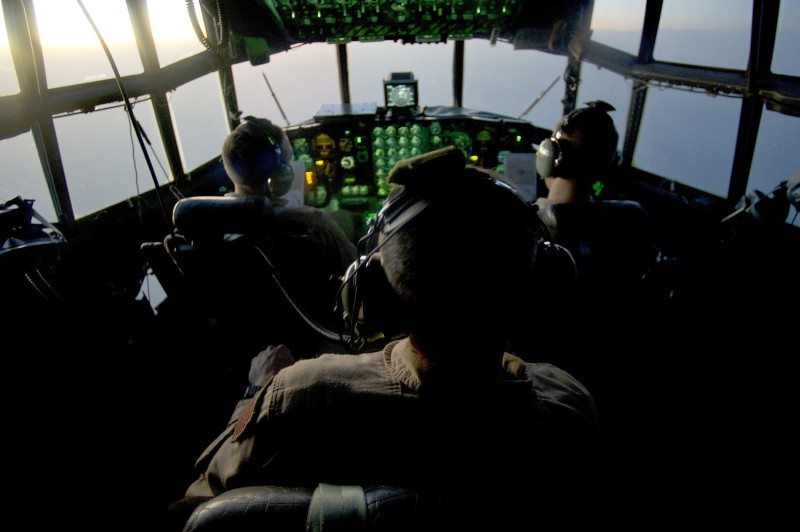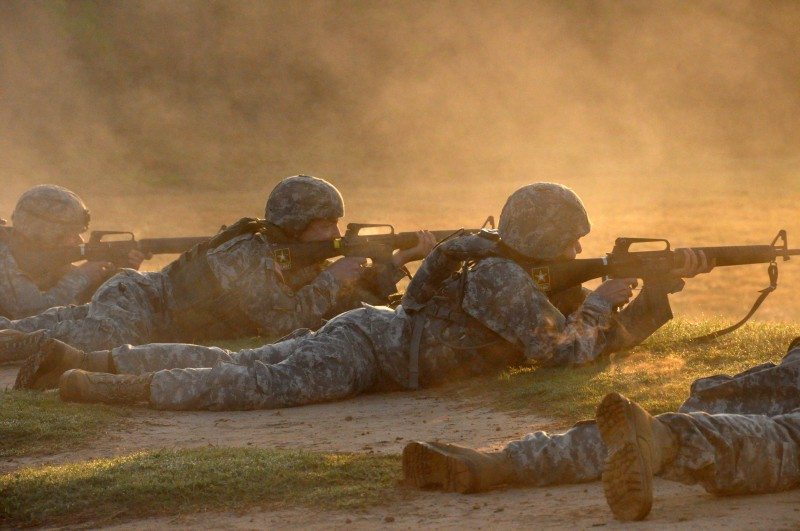The C-130 Hercules hosts a flight engineer and navigator among its six-man crew. These positions are quietly being phased out not only on this aircraft, but among military airframes in general.
As seen with the C-130J Super Hercules model and other transport aircraft, the FE and navigator positions are gradually being phased out and replaced with an integrated avionics system.
“Personal experience is being replaced with computer systems that are supposed to think for us,” said Capt. Richard Konopczynski, the 746th expeditionary airlift squadron’s aircraft commander. “We’ve had to learn to do without these positions as the planes are being upgraded.”
The FE has a 360-degree knowledge of all working systems housed inside the C-130H2.
Proficient on at least 10 different systems, Senior Master Sgt. Chris Janik is responsible for not only knowing how to employ the systems while in flight, but the crew depends on him to know the full capabilities of the plane.
“This aircraft was best designed to land in these areas: in mud, in snow and on dirt strips,” said Janik, a 746th Expeditionary Airlift Squadron flight engineer.
The crew operates a C-130H2, some of which are nearing 33 years old. Over the years, the aircraft has undergone technological upgrades, aiding the C-130’s navigation systems and the aircraft’s capabilities.
While the C-130s have been well-maintained, they are still an aging aircraft, a consideration the crew keeps in mind when mission allows.
“You don’t want to drive it with the pedal to the floor all the time,” the FE said. “It can go full throttle but it can’t be sustained, especially not in these environments so you save pushing it to those limits for when you really need it.”
Flight engineers speak for the aircraft and they communicate to the pilots what the abilities and limits are under certain stresses and in different environments.
“I give the pilots information on what the aircraft can handle based on certain factors such as weather, altitude and terrain,” Janik said.
Because of his position on the flight deck, the FE has a bird’s eye view of what’s going on while the pilots are focused on steering the plane.
“He’s the ‘overseer,'” said Capt. Ryan Mowers, a 746th EAS pilot. “His position is unique because when pilots are focused on flying, we are so focused on the approach that those extra set of eyes is mission critical because have a bird’s eye view of everything.”
Pilots have come to rely heavily on the FE position to give guidance on the aircraft’s capabilities.
“As a pilot, I rely on (the FE) to figure out the aircraft’s current capability at any given time during the mission,” Konopczynski said. “Under normal circumstances, he has a basic job to perform. But when things change up, we look to him for guidance on the best way ahead.”
The challenge comes in when the crew has to think on their feet and sort through all their knowledge and apply it to something impacting the mission with immediate urgency.
“One of the hard parts is when you think you have all bases covered and then something pops up that you haven’t accounted for,” Janik said.
In those particularly tricky situations, it is important to have a cohesive and close relationship with your crew, Konopczynski said.
“That’s when all the training you have comes into play,” he said. “It’s also important that you know your crew and you know what strength each brings to the table. In those moments, you rely on that to pull you through.”
Another integral position on the flight deck is the navigator.
The navigator directs the aircraft from point A to point B as well as determining the speed and course and the adjustments of each as needed.
“Over the course of aviation, flying has gone from celestial navigation to having integrated GPS system and technology-driven navigation,” said Lt. Col. John Bletner, a 746th EAS navigator.
At any given moment, navigational instruments can go offline, requiring the colonel to find alternative methods of determining their location on the grid.
“There’s multiple ways to tell where we are at any given moment,” Bletner said. “There are redundant systems that will allow us to tell where we are, even if the GPS instrumentation goes offline.”
Whether he is feeding the pilots information on where the aircraft is on the mission’s route, or helping guide the pilots into airfields with low visibility, the navigator can tell the pilots exactly where they are.
“He’s the key component to building situational awareness,” Konopczynski said. “We will be receiving input from outside units and the (navigator) will be taking that into account to plot our course and make sure we’re safe to proceed.”
The navigator also recommends routes to ensure weather avoidance.
“It’s better to readjust your course early on when you first become aware there is a bad weather pattern in front of you than to try coming right up on it and then trying to maneuver around it,” Konopczynski said.
While the FE and navigator are two unique positions quickly being phased out, crewmembers said they are essential to the 6-man crew.
“The FE will watch our speed on takeoff and landing and the navigator gives us directional cues,” the aircraft commander said. “Everyone has a role and those two positions we’re lucky to have.”
“They give us a 3-D perspective of what happening around us,” Mowers added.
In an age where technology is slowly rendering positions operated by people obsolete, the C-130H crews prefer having the extra crewmembers onboard.
“The Air Force has tried to come up with computers that can replace these positions,” the aircraft commander said. “The drawback is flexibility. They don’t have the same variety of experience built in that humans do.”











